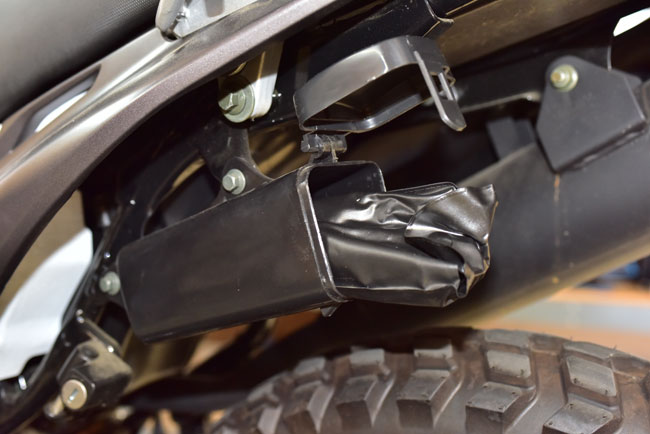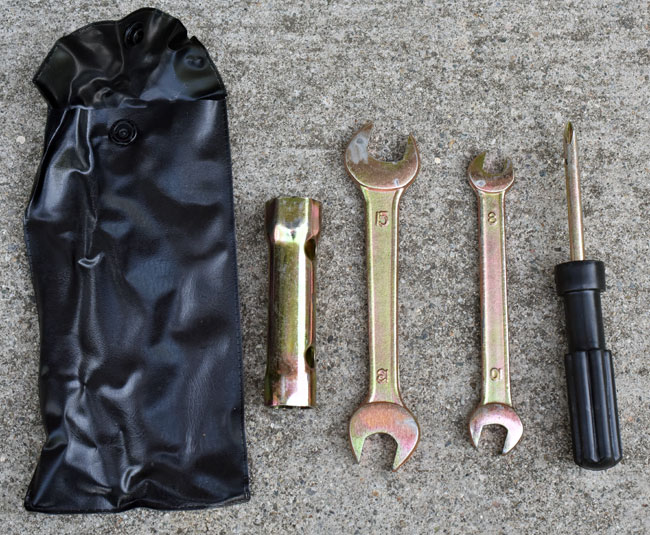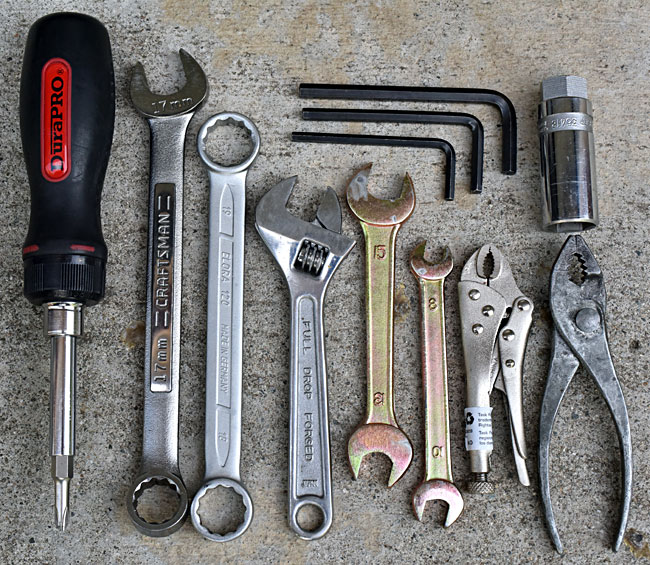We’ve been featuring toolkits and rider resources in recent blogs, and here’s another one. It’s based on tailoring a toolkit for a specific bike (in this case, the CSC TT250). It’s from a blog I wrote for CSC about 4 years ago when I led a group of TT250 riders through northern Baja. The idea is to carry a tool for every likely need, without carrying any unnecessary tools. This blog should be particularly useful for TT250 riders. The concept can be extended to any motorcycle.
Originally posted on October 13, 2016
I promised a recommended TT250 toolkit a few blogs back, and this afternoon I put together a list of the tools I’m going to bring with me on the Baja trip. The Internet being what it is, I have no doubt this will spark a firestorm of controversy from those of you who have different ideas. Hey, as my personal hero (that would be Dubya) once said, bring it on. Seriously. If there’s something you think I missed, let us know and if I think it makes sense I’ll add it to the list. That last part is important. I’m bringing along the tools I think I might need in the unlikely event something goes south. I’m not planning on doing an engine rebuild on the side of the road. Knock wood, I’ve only ever had one serious breakdown on any of my rides (and it wasn’t on a Chinese bike; in fact, it was on a bike that costs about 10 times what a new TT250 goes for…and that bike didn’t come with any tools).
The TT250 comes with a modest tool kit mounted in a container along the frame, as you see below.

They say halitosis is better than no breath at all, and that’s kind of how I feel about the tool kits that come with new motorcycles (indeed, as mentioned above, some new motorcycles don’t include any tools).
Here’s what you get with the stock TT250 tool kit:

It includes a screwdriver with both blade and Phillips head drives, two wrenches with 8mm, 10mm, 13m, and 15mm ends, and a pressed steel socket that you’re supposed to turn with the screwdriver shaft. The problem is that I don’t think that pressed steel socket would hold its shape under serious torque (and even if it did, and you probably couldn’t exert enough torque with the screwdriver shaft to adequately tighten or loosen the larger fasteners or the spark plug).
I took a hard look at the nuts and bolts on my TT250 this morning, and here’s what I’m putting in my tool kit for Baja:

From left to right, here you go:
-
- A reversible drive screwdriver with both Phillips and blade drives. It’s a big screwdriver, but I like the thing. It’s one of those tools that’s gone on all of my rides.
- A 17mm wrench. There are a lot of 17mm bolts and nuts on the TT250, including the oil drain plug. It’s a must-have item.
- A cool wrench that has both 18mm and 19mm box ends. This will come in handy for both the front and rear axles.
- A crescent wrench. This is a catchall and it’s a good thing to have. I could have left out several other wrenches and just taken the crescent, but I wanted the others.
- I kept the two wrenches that come with the standard TT250 tool kit. They fit virtually all of the smaller fasteners on the bike.
- A small channel lock pliers. I mainly carry these because I once read about a guy using them when he lost his shift lever. I’ve never had that happen, but these things were on sale for a buck at a Lowe’s and I couldn’t pass them up. If I ever lose a shift lever, I’ll be good to go.
- A pair of pliers. These came with my 1965 Honda Super 90 tool kit, which I bought in 1966. I’ve had them with me on every ride ever since.
- Allen drives in 4mm (for the fuel tank filler cap), 5mm (for the body panels), and 6mm (for the handlebar clamps). I could have bought one of those pocketknife-like things that have a bunch of Allen drives, but these are the only three I think I’ll need and I didn’t want to add the bulk of the larger multi-driver tool.
- A spark plug socket. You might wonder why I don’t have a socket driver for it. The 18mm wrench fits it perfectly.
And that’s about it, folks. All of the above won’t fit in the little plastic case the original factory tool kit occupied, so they’ll go in a tool roll that’s going in my soft luggage. That plastic box for the original tool kit? I may use it to carry a burrito.
Want to see our other rider tool and resources blogs? Here you go:
Rider Tools. Good buddy Mike Huber, our paratrooper-at-large, wrote a concise compendium of website and other resources every adventure rider needs to know.
Rider Tools: Part 2. This blog covers the tools Joe Gresh carries with him. It’s a good one. He saved my butt in Baja with that jump start gizmo!
Baja Spares. This is a list of the stuff I take with me when I ride in Baja.







